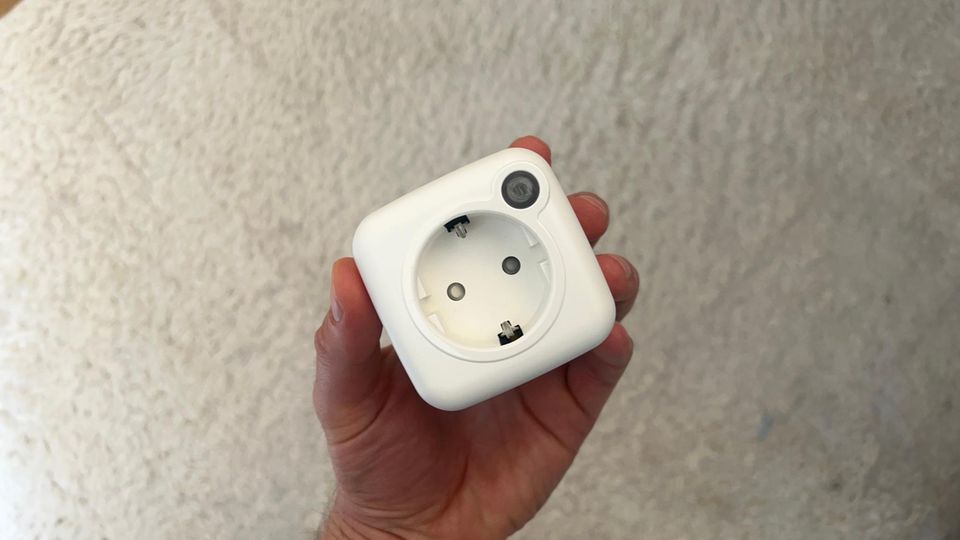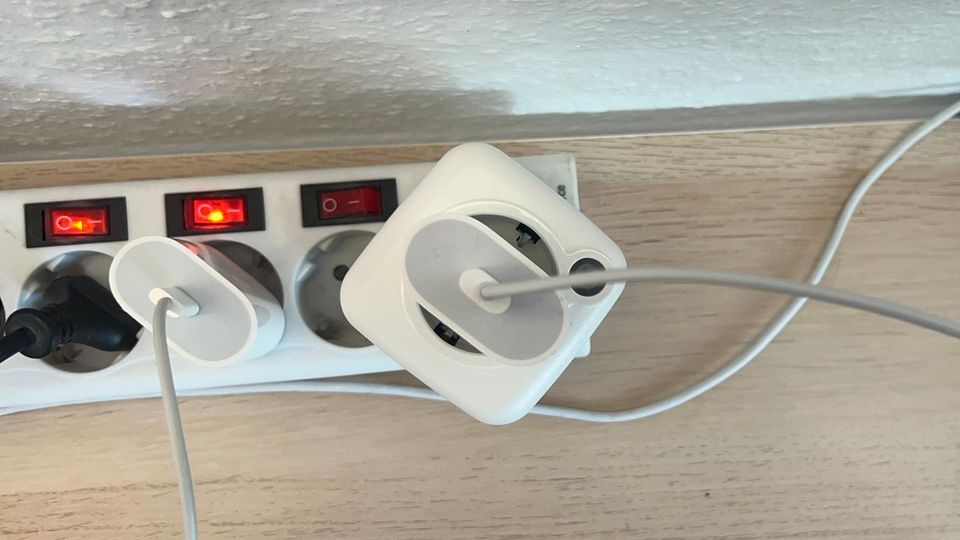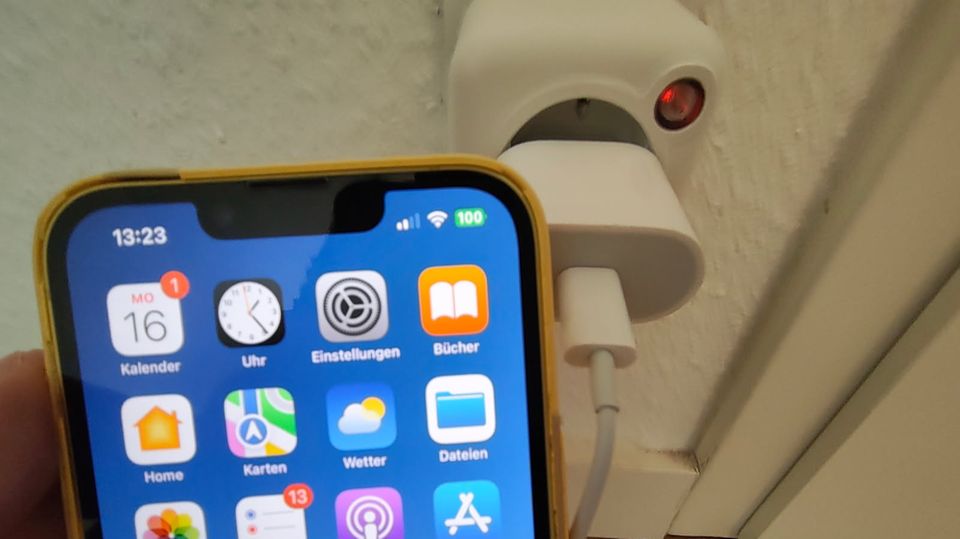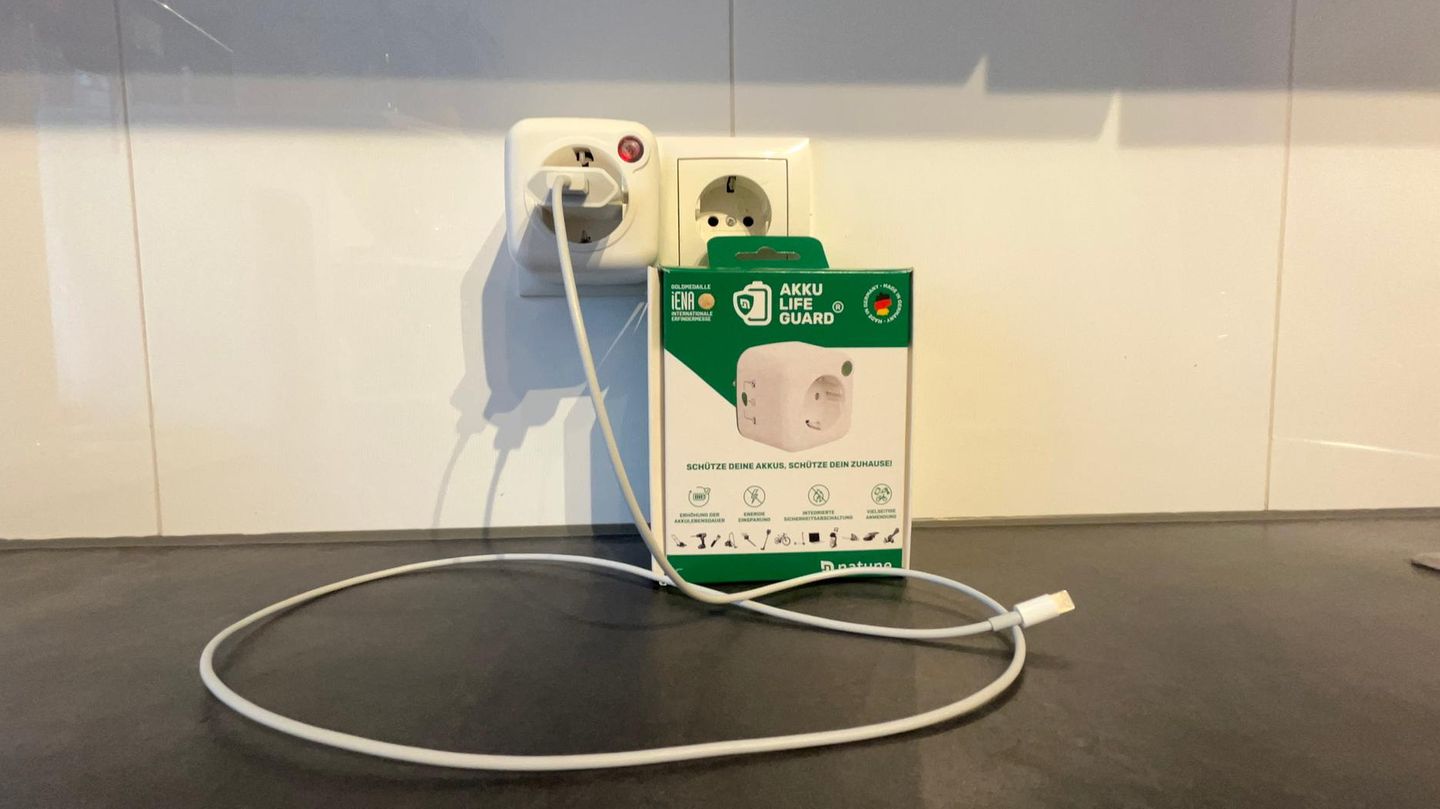“The lion’s cave”
Saves electricity and protects the environment: the battery Life Guard from DHDL in the test
Copy the current link
Add to the memorial list
The battery Life Guard from “The Lion’s Den” promises to intelligently protect the battery of smartphone & Co. The test clarifies how this works.
The lifetime of a battery depends on its charging cycles. A charging cycle describes the complete discharge and again recharge of a battery. It should be noted that a charging cycle is also used when you unload your smartphone to 50 percent in one day and then recharge again at 50 percent discharge.
What does that mean for the lifespan of a battery? Nothing more than that we all have an interest in using our batteries as efficiently as possible. However, many people miss this, because we usually charge our smartphone overnight.
Load your cell phone overnight? Not a good idea
And with that we do not give the battery a favor. The problem is that it hangs on the charger for too long. If the battery is fully charged, the charging function switches off. The battery discharges minimally, which means that the smartphone loads again. With these mini loads we waste important percentage of the charging cycles.
Modern smartphones therefore remember the loading home of their users and delay the full charging accordingly. It wants it even better make. This is a socket in which you can set until the percentage of the battery should charge and which then automatically turns off.
The trio behind Akku Life Guard
The socket invented a trio from the Allgäu consisting of Hans-Peter Nägele, Andreas Tutschner and Christoph Tutschner. The three present their invention in “The Lion’s Den”. Nice side effect: The battery Life Guard not only protects the battery, it also saves electricity and offers a shutdown function when the battery is overloaded. The shutdown function protects against fires that can be caused either by defective chargers or defective batteries.
Battery Life Guard from DHDL in the test
In the scope of delivery, only the operating instructions and the Life Guard battery are included. Its operation is actually self -explanatory. On the side there is a slider where you set in which mode you want to use the socket. The offers the options to use it as a normal socket (center), to load the battery 100 percent (right) or to load the battery between 70 and 90 percent (left).
The on-switch on the top is still on switch. Before put the battery Life Guard into the socket, select the mode you want to use. Then place it in the socket, connect the charger with it and press the on switch for three seconds. The button shines red when the Life Guard is in 100 percent mode; Orange if you use it as a normal socket; And green when the battery is loaded between 70 and 90 percent. Now connect your smartphone to the charger. Complete.

Small disillusionment
So simple, you should think. But that did not work in the test at first, because we connected the battery Life Guard to a multiple socket that offers individual switches per socket and did not happen. The reason is simple: the battery Life Guard automatically pushes the switch down and with it. With a multiple socket without a single circuit, there was no problem, here it worked properly.

We operate it up to 100 percent in mode. Accordingly, the power button shines red. As a charger, we use that of an Apple IPAD in conjunction with the inductive MagSafe charging cable and an iPhone 14. This works without any problems. The starting point was a charging of 70 percent. We wait for the exact time when the iPhone reaches 14 100 percent. And when it does, nothing. The lamp continues to shine red and the charging display also shows that the smartphone gets electricity.

The charger decides on charging success
Can’t actually be. That is why we plug in another, but identical charger from Apple. This time with USB-C cable and an NOTHING Phone 3 (A), which is already fully loaded. Here at 100 percent charging stand happens: nothing either. After an estimated three to five minutes, we hear it click and see that the red lamp of the battery Life Guards has run out. So it works.
We try again with the inductive charging cable and the iPhone 14. But that has it its problems. Even after 20 minutes we do not hear any click, which is why we come to the decision that he does not recognize when the battery is fully loaded.
To make sure that it is due to the type of charging cable, we connect the iPhone 14 again with the LIFE Guard battery. And lo and behold, now it works perfectly again. At 100 percent charging status of the iPhone 14, it clicks after a few minutes and the socket switches off.
Addendum: Is inductive charging therefore impossible with the battery life guard? No. In ECO mode with the green lamp, the battery Life Guard switched off with a charging level of 95 percent. That is five percent more than the rumored 90 percent, but still within the framework.
Conclusion
The Keep in the test what he promises. It also works with an inductive charging cable, albeit not as accurate as with a normal cable. His price is quite steep with 60 euros per life guard. But in the worst case, it also protects against fires. Apart from that, they do something good for the environment if the charger does not pull electricity continuously.
Incidentally, the trio from the Allgäu demands 200,000 euros for ten percent of their company’s shares at “The Lion’s Den”. You can find out on Vox on June 16 at 8:15 p.m. (and since June 9th on RTL+) on June 16 at 8:15 p.m.
Transparency notice: Like VOX, the star is part of RTL Germany.
Correction: In an earlier version of the article it stood that the battery Life Guard does not work with multiple sockets and inductive charging cables. The errors were corrected.
*This article contains so-called affiliate links to products in online shops. If a user clicks on it and buys something, the publisher receives a commission from the dealer, not from the manufacturer. Of course, where and when you buy a product is up to you.
Source: Stern




